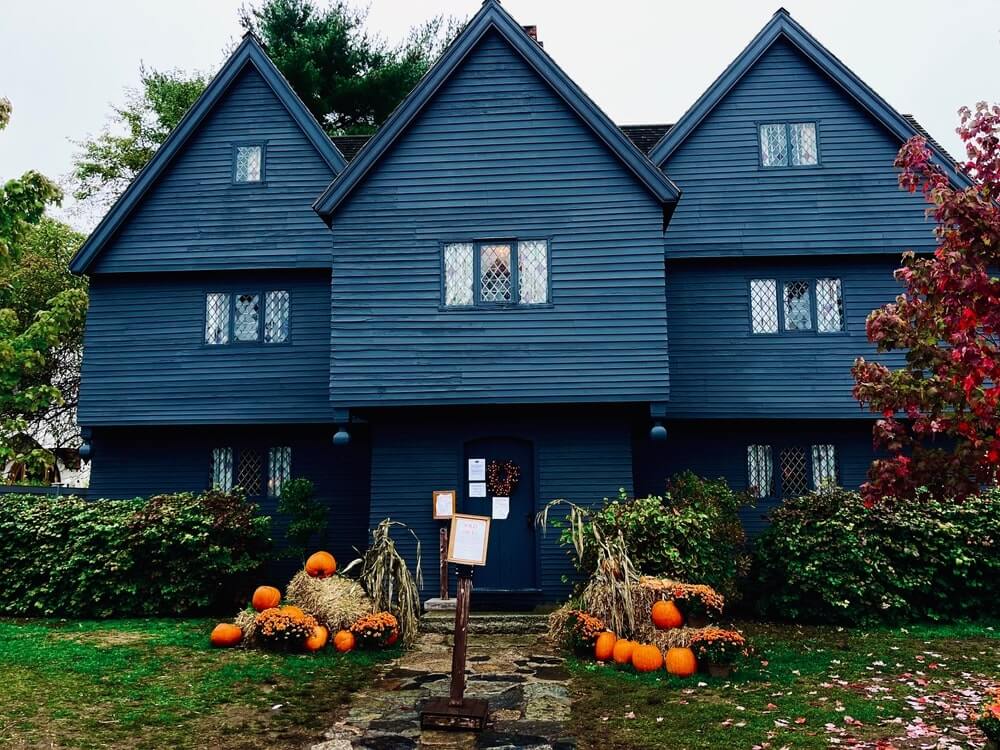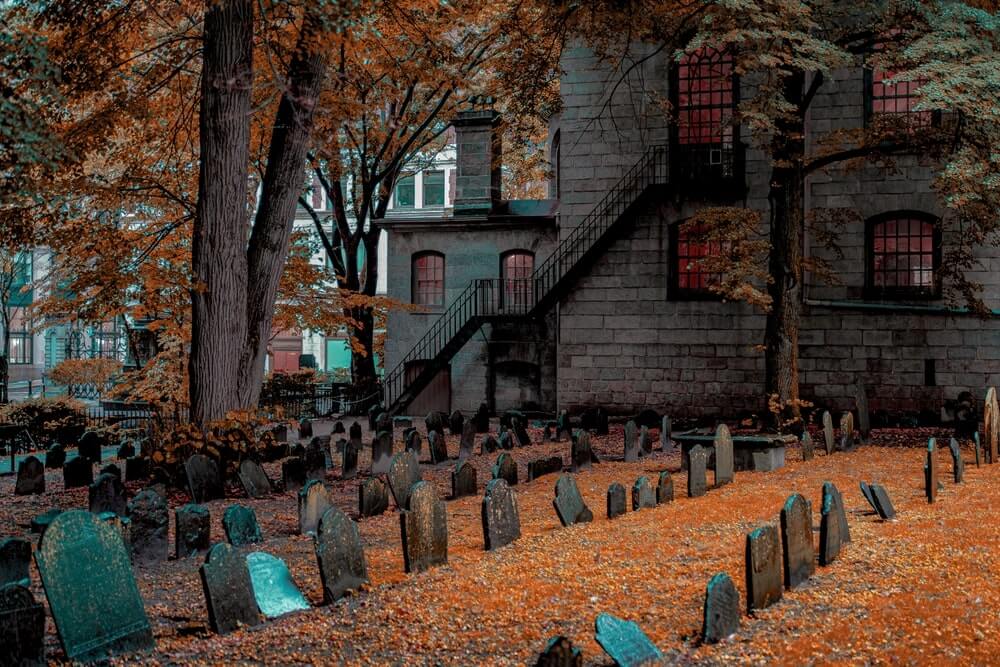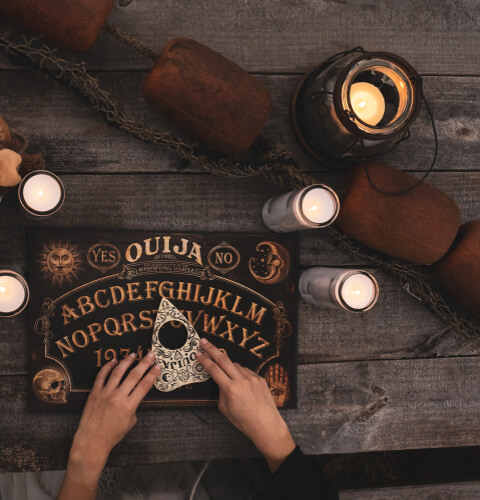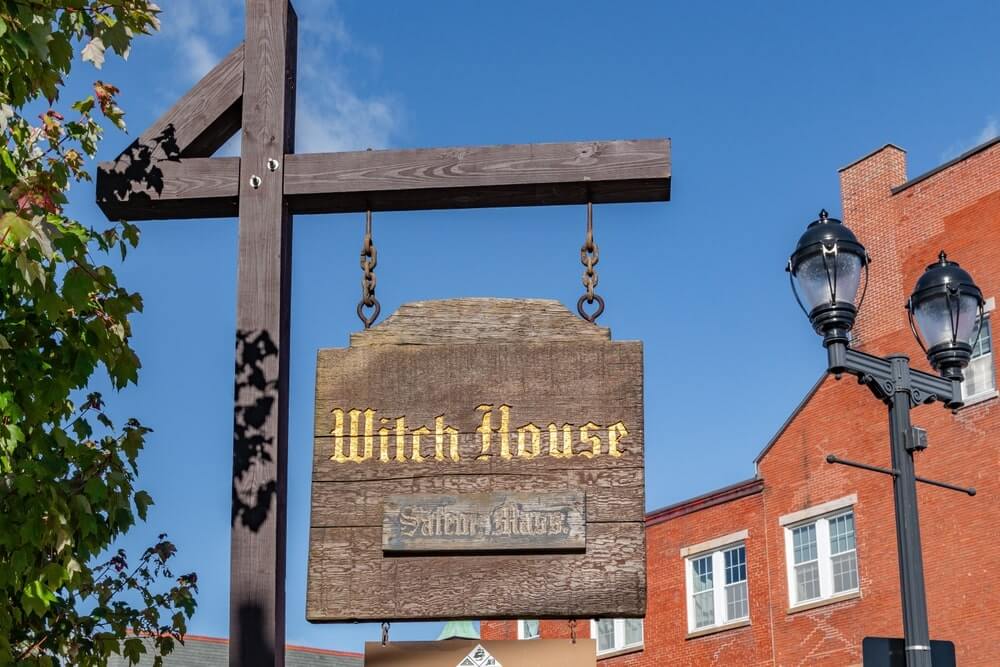Charmed & Cursed: A Walk Through Witch City – Wingman Tour Highlight
Salem gets pigeonholed. Witch trials, broomsticks, pointy hats—tourists arrive expecting one story and miss about three centuries of everything else.
This tour fixes that.
Yes, we cover 1692. You can’t skip it. But Salem was a maritime powerhouse long before the trials, and it became Nathaniel Hawthorne’s muse long after. These days it’s where Halloween lives year-round, and honestly? The city’s leaned into it hard.
Where Hollywood Met History
Ropes Mansion sits behind an iron fence on Essex Street, all red brick and Georgian windows. Hocus Pocus fans recognize it instantly—the Allison’s house, where Max tries way too hard to impress her. Built in the late 1720s by Judge Samuel Ropes, the mansion survived fires, family drama, and eventually became a filming location that cemented Salem’s pop culture status.
The garden out back stays quiet even when tourist season peaks. Roses climb the walls in summer. Nobody rushes you here.

The Only Building That Remains
The Witch House stands dark and angular at 310 Essex Street. Jonathan Corwin lived here during the trials. He examined the accused in these rooms. Magistrates met here. People’s fates got decided within these walls.
Every other structure connected to 1692? Gone. This survived, and walking through it lands differently than reading about it. The ceilings hang low. The rooms feel smaller than you’d guess. You can picture how fear spread through a community when neighbors turned on each other.
Coffee With a Side of Goth
Blackcraft Coffee pours drinks in a space that feels lifted from a Tim Burton set. Black walls, occult artwork, metal music playing low. The baristas have tattoos and strong opinions about roasts.
Their Death Wish blend lives up to the name. Grab something iced if you’re walking all day—the cold brew keeps you going through the next few stops.
Samantha Stephens Gets a Statue
The Bewitched sculpture captures Elizabeth Montgomery mid-nose-twitch on a broomstick. Tourists line up for photos. The show ran from 1964 to 1972 and turned Salem into shorthand for witches everywhere, even though they filmed it in California.
TV Samantha was a housewife with magic powers and a husband who wanted her to act “normal.” Real Salem history? Way darker, way more complicated. But the statue’s fun. People smile here.

Where Salem’s Founders Rest
The Burying Point Cemetery opened in 1637. Headstones lean at odd angles, carved with skulls and wings. Judge John Hathorne—Nathaniel’s ancestor—is buried here. So is Richard More, a Mayflower passenger who lived to see Salem’s founding.
The gravestones bear death’s heads that stare back at you. Colonial stone carvers weren’t subtle. Mortality got acknowledged bluntly back then. No soft euphemisms, no “passed away peacefully.” Death came, they carved it, they buried people and moved on.
Halloween Never Ends Here
The Halloween Museum packs seven rooms with vintage decorations, costumes from every decade, and collector pieces most people forgot existed. Blow molds from the ’60s. Paper decorations from the ’30s. The owner accumulated this stuff for years before opening to the public.
You’ll see how Halloween transformed from harvest festival to commercial juggernaut. Some displays make you nostalgic for childhood Octobers. Others just make you want to start decorating in July.
Ouija Boards Get Their Own Museum
The Salem Witch Board Museum dedicates itself entirely to talking boards. Vintage Parker Brothers sets. Homemade versions. Fuld boards from the early 1900s. The history goes deeper than most people expect—these weren’t always spooky. Parlor rooms across America used them for entertainment before horror movies made them sinister.
The museum stays lighter than some of Salem’s heavier historical sites. You can laugh here. Take weird photos. Wonder if that planchette actually moved or if your friend pushed it.

Hawthorne’s Gothic Masterpiece
The House of the Seven Gables looms over Salem Harbor, all dark wood and secret staircases. Nathaniel Hawthorne used it as inspiration for his 1851 novel about family curses and hidden guilt. The house dates to 1668, built by Captain John Turner when Salem’s merchant ships ruled Atlantic trade routes.
You can climb through the hidden staircase Hawthorne wrote about. Stand in rooms where sea captains counted their fortunes. Look out at the harbor that made Salem wealthy enough to build mansions like this one.
The grounds include Hawthorne’s birthplace, moved here in the 1950s. His cousin owned the Seven Gables house. He visited often, absorbed the atmosphere, turned it into American Gothic literature.
Salem rewards wandering. The tour hits major sites, but the side streets hold shops run by practicing Wiccans, restaurants in 300-year-old buildings, and locals who get asked about witches so often they’ve perfected their eye-rolls.
October brings crowds that clog every sidewalk. Visit in April or September and you’ll actually see the city. The magic works year-round. The history doesn’t take Halloween off.
Download the tour. Bring good walking shoes. Leave room for detours.

